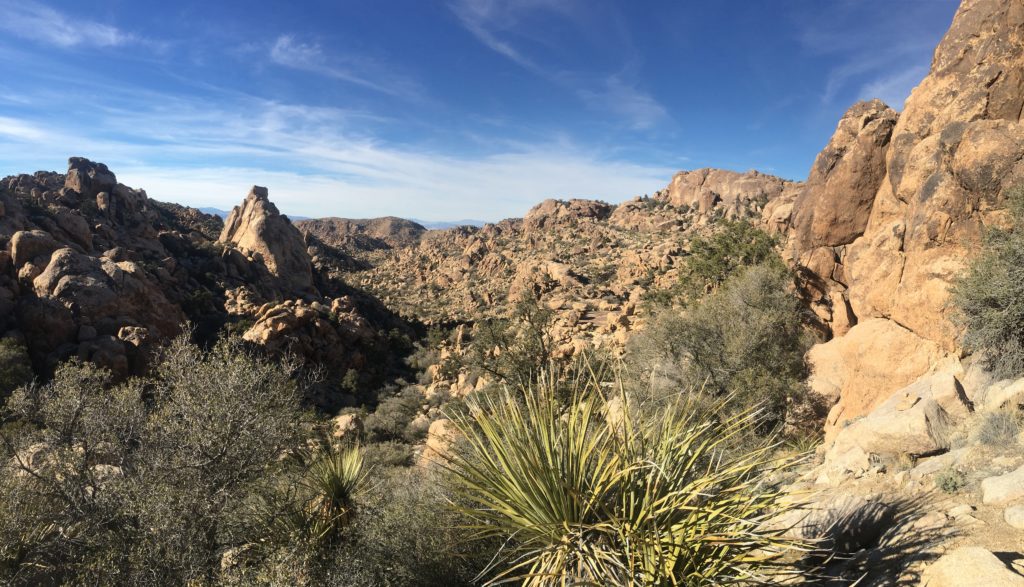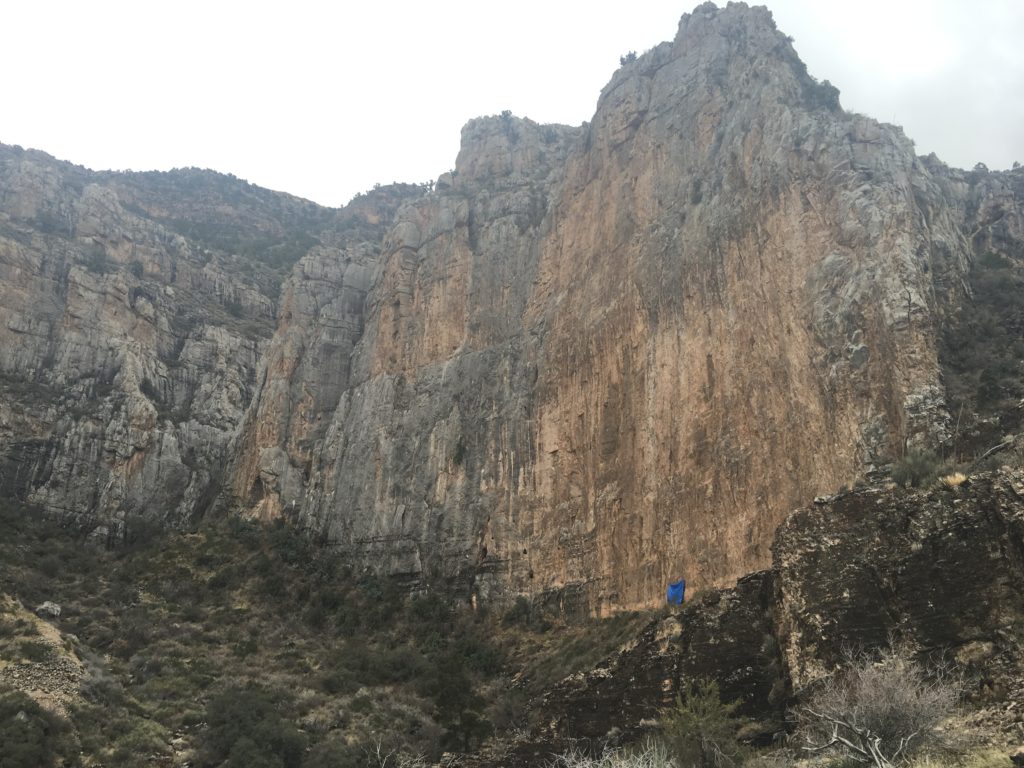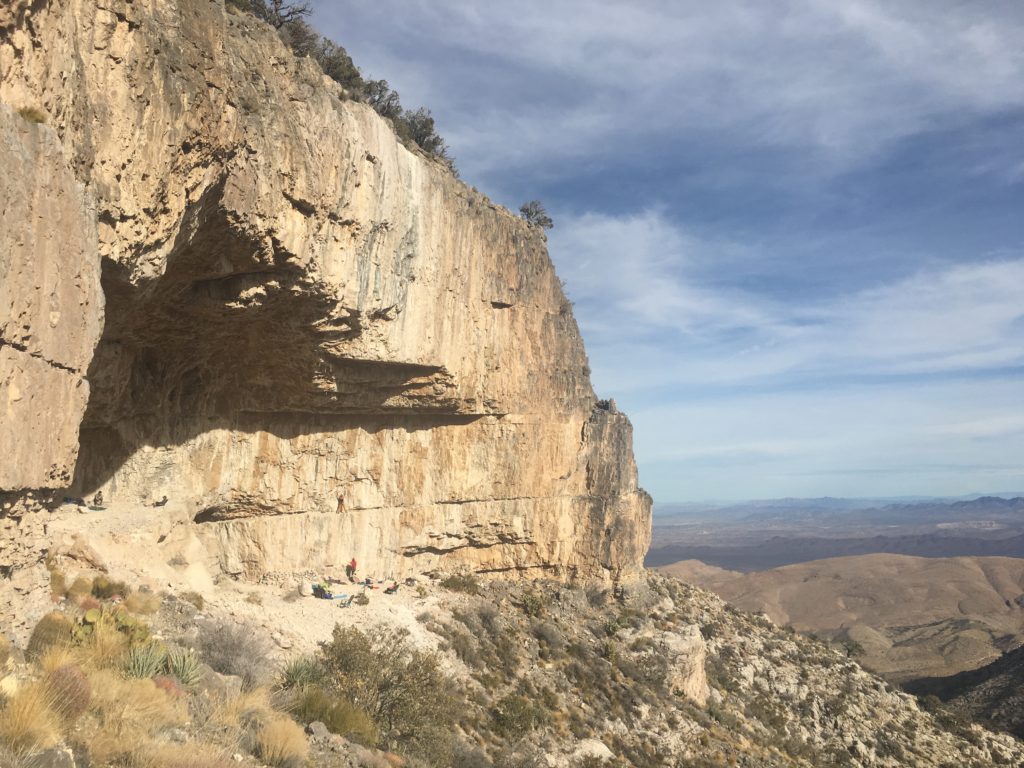For the fifth time that night, the feet I have jammed into the crack above my head slip and I am spat out head-first onto the crash pads below me. An hour, a few shots of whiskey, and some moderately-sized skin abrasions ago I was sitting in my campsite gauging the damage my hands had taken on a full day of crack climbing. A group of campground neighbors I met the day before walked by with crash pads and said, “Hey. You wanna come try an offwidth invert boulder problem with us? We’ve got whiskey.” I looked down at scabby knuckles and thin fingertips. “Of course,” I said and grabbed a roll of athletic tape.
For the laypeople: an offwidth crack is a crack in the rock that is larger than your balled fist. They take what is usually an awkward and gut-wrenching effort to climb and are avoided by most people. A google search will turn up lots of fun lore and photos about off width crack climbing — here’s a good video. This particular boulder problem calls for a technique called ‘inverting,’ which is exactly what it sounds like. You take your feet and shove them into the crack above you, hang upside-down, and use this position to gain progress.
Mark, the friendly neighbor, was true to his word and warmed up my first go on the boulder with a swig of Jack D’s. Hard alcohol doesn’t feel awesome in your stomach when all your muscles are engaged in a struggle to keep you hanging from the feet jammed above your head, but the absurdity appeal of the situation made it hard to say no. The next move involves reaching up to get what’s called a hand stack: using the combined meat of both your hands on top of each other to jam the inside of the crack. I pull on the hand stack, slide my feet out in an attempt to move them past my hands, and hit the pads below with a thump.
“Nice burn,” Mark says and hands my prone body the bottle. I crawl to a sitting position to see that more people showed up to see what the yelling was about. In just twenty minutes, our cadre of inverted offwidthers had grown from four to nine and there was a constant line of people waiting for the pain.
“For a few minutes before dinner,” Mark had said when he walked by and recruited me. Several hours later we were still huddled beneath the dirty and awkward roof, surrounded by people we had all just met and a small sea of LED lights. Mark is the first one to finish the boulder problem (and shortly after, the bottle) to wild cheers from those assembled. Shelton, who had walked by earlier to see what the noise was and promptly ran back to his car to grab his climbing shoes, was the only other one to send. I said, “okay this is my last try” three times before hunger drove me and the others back to our camps.

I am in Hidden Valley Campground at Joshua Tree National Park, a popular winter climbing location in Southern California’s desert. I arrived home from Egypt right before Christmas, having decided to head home a month or so early from the Middle East. After a few failed attempts to find a short term job, I took a look at my bank account and decided to hit the road and climb for a few months, which I’ve been doing since the start of the year.
Joshua Tree is rife with climbing history, crack climbs, and coyotes. I love all of these things. Personal stories from the founders of the sport annotate the online directories of the Josh climbs, the granite cracks are varied and interesting, and I fall asleep every night to the proximal cacophony of the Hidden Valley coyote population.

I started in Red Rocks with a climbing partner blind date I had set up on the internet before leaving home. The blind date worked out well — Kenny was awesome — but the weather at the Red Rock sandstone mecca was less than ideal and thwarted our big-climb aspirations. We drove to limestone crags where the wet rock doesn’t break, like Limekiln and Arrow Canyon — magical places in their own right. The minute that Kenny had to head home the week after we met, another climber I met in a rainy Arizona parking lot days before pulled into my campsite and we’ve been climbing together ever since.

Meeting someone randomly and then camping, cooking, and climbing with them for weeks at a time is par for the course in this life, as is the invert-evening I describe above. Letting go of the ingrained 9-5 lifestyle anxiety plagued me the first few weeks out, but the older folks I met out chasing the dream squashed it. I try hard all day with healthy levels of climbing stress and fatigue, get back to camp before dark with enough time to cook a bunch of cheap, good food, get quality rest, and do it again the next day. I feel extremely fortunate to have the resources to float the “climbing monk” lifestyle, if only for short chunks at a time.

Life’s cheap, I meet lots of interesting people from lots of weird walks of life, and I’m feeling fulfilled, directed, and happy. Up next is a few weeks getting in shape to ice climb in Ouray with different friends, and then a trip into the big mountains in the Canadian Rockies with Marcus in March. Aaand that’s me, for now. Thanks for stopping by!
Leave a Reply